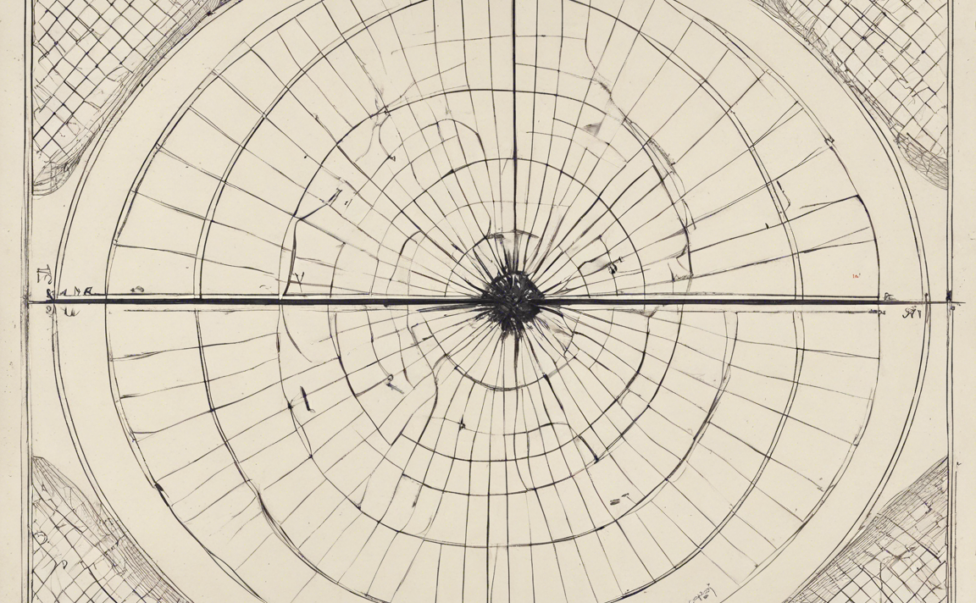Exploring Quadrants in a Circle: A Complete Guide
Introduction
Quadrants in a circle, a fundamental concept in geometry, play a crucial role in understanding the properties and relationships of angles and arcs within a circle. When you divide a circle into four equal parts, each part is known as a quadrant. Quadrants are essential in various mathematical applications, including trigonometry, coordinate geometry, and calculus. In this comprehensive guide, we will delve into the intricacies of quadrants in a circle, discussing their definitions, properties, and applications in detail.
Understanding Quadrants in a Circle
In a circle with its center at O, the circle is divided into four equal parts known as quadrants. Each quadrant is formed by two perpendicular radii drawn from the center O to the circle’s circumference. The quadrants are usually labeled as Q1, Q2, Q3, and Q4 in an anti-clockwise manner, starting from the top right quadrant being Q1.
Properties of Quadrants
-
Angles in Quadrants: Each quadrant in a circle consists of a 90-degree angle at the center of the circle. This central angle divides the circle into four equal parts, with each quadrant subtending an angle of 90 degrees at the center.
-
Coordinate System: Quadrants in a circle are used to establish a coordinate system, known as the polar coordinate system. In this system, each point on the circle is represented by a radius vector and an angle measured from a fixed line called the polar axis.
-
Trigonometric Functions: Quadrants are closely related to trigonometric functions such as sine, cosine, and tangent. The values of these functions can be determined based on the signs of the coordinates of a point in the specific quadrant.
Applications of Quadrants in Mathematics
-
Trigonometry: In trigonometry, quadrants play a crucial role in determining the signs of trigonometric functions based on the coordinates of a point on the unit circle. This information is essential for solving trigonometric equations and problems.
-
Coordinate Geometry: Quadrants are fundamental in establishing the polar coordinate system, which is widely used in mathematics, physics, and engineering to represent points in space.
-
Calculus: Quadrants are utilized in calculus to define the behavior of functions in different regions of the coordinate plane. Understanding the properties of quadrants helps in analyzing the behavior of functions and their derivatives.
Exploring Quadrant Rules
-
Quadrant I (Q1): In Q1, both the x and y coordinates of a point are positive. This quadrant is located in the top right of the circle and is commonly known as the positive quadrant.
-
Quadrant II (Q2): In Q2, the x coordinate is negative, while the y coordinate is positive. This quadrant is positioned in the top left of the circle and is referred to as the negative x, positive y quadrant.
-
Quadrant III (Q3): In Q3, both the x and y coordinates of a point are negative. This quadrant is situated in the bottom left of the circle and is known as the negative quadrant.
-
Quadrant IV (Q4): In Q4, the x coordinate is positive, while the y coordinate is negative. This quadrant is located in the bottom right of the circle and is termed the positive x, negative y quadrant.
Key Points to Remember
- Quadrants in a circle divide the circle into four equal parts, each subtending an angle of 90 degrees at the center.
- Quadrants are essential in trigonometry, coordinate geometry, and calculus for various applications.
- The signs of the coordinates of a point in a specific quadrant determine the values of trigonometric functions.
Frequently Asked Questions (FAQs)
-
What is the significance of quadrants in mathematics?
Quadrants in a circle help in dividing the circle into distinct regions, aiding in the analysis of angles, coordinates, and trigonometric functions. -
How are quadrants related to the coordinate system?
Quadrants establish the polar coordinate system, where points on the circle are represented by radius vectors and angles from a fixed line. -
Can you identify the quadrant based on the signs of coordinates?
Yes, by examining the signs of the x and y coordinates of a point, you can determine the quadrant in which the point lies. -
How are trigonometric functions associated with quadrants?
The signs of trigonometric functions are determined by the quadrant in which the angle resides, aiding in solving trigonometric equations and problems. -
In which quadrant are both x and y coordinates positive?
Both x and y coordinates are positive in Quadrant I (Q1) of a circle, which is the top right quadrant.
In conclusion, understanding quadrants in a circle is essential for mastering various mathematical concepts and applications. By grasping the properties and rules associated with quadrants, you can enhance your problem-solving skills and analytical abilities in mathematics. Whether you are studying trigonometry, coordinate geometry, or calculus, a solid foundation in quadrants will undoubtedly benefit your mathematical journey.

